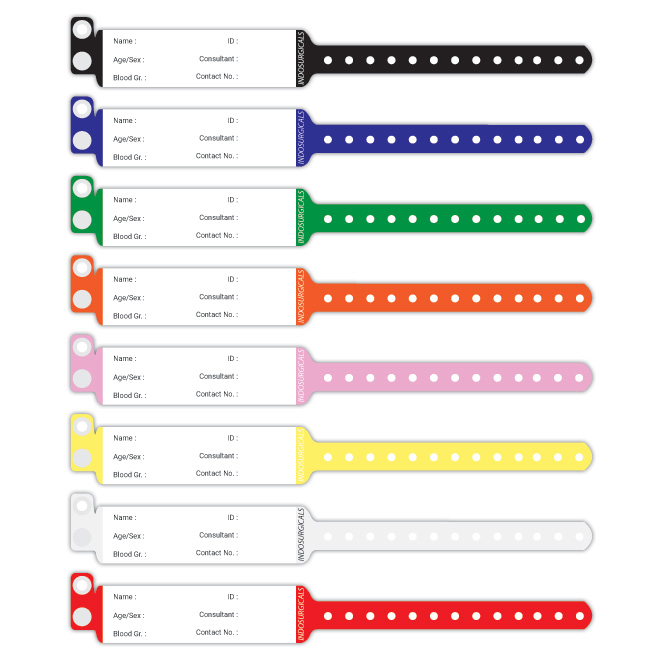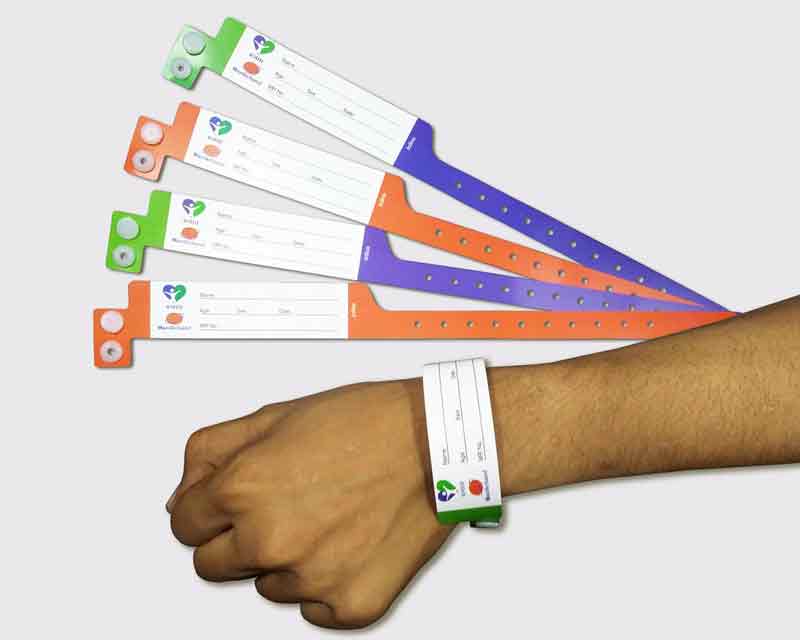Checking Out the Various Types of Patient Identification Band Utilized in Medical Facilities
In the intricate globe of healthcare, the critical role of Patient Identification bands typically goes undetected. These bands, varying from straightforward paper wristbands to advanced RFID bands, create the backbone of Patient security protocols, guaranteeing accuracy in Patient Identification.
Understanding the Value of Patient Identification Bands
While they may appear like plain devices, Patient Identification bands play an essential function in clinical facilities. These bands serve as a vital tool for validating Patient identity, preventing medical errors associated to misidentification. Patient Identification bands additionally help in enhancing management tasks, ensuring accurate record-keeping and billing.
Traditional Paper Wristbands: Their Use and Limitations
Typical paper wristbands have been a staple in Patient Identification across various clinical facilities. While their use is widespread, they nurture specific limitations that might influence their performance in Patient management. This area will concentrate on the range of their application and the inherent drawbacks connected with their usage.
Paper Wristbands: Usage Extent
In the world of Patient Identification, paper wristbands have long held an important role. These bands are generally used in outpatient setups, where the Patient's remain is momentary. Regardless of advancements in innovation, the simple paper wristband continues to be a affordable and reputable option for Patient Identification in numerous healthcare scenarios.
Limitations of Paper Wristbands
Despite their widespread usage, paper wristbands are not without their drawbacks. Their physical resilience is just one of the significant limitations. Exposure to water, sweat, or misuse can provide them unreadable or perhaps create them to break down. Furthermore, paper wristbands usually do not have the technical abilities of more modern alternatives, such as barcoding or RFID chips, restricting their capability to simply showing composed info. The inability to upgrade or change the data on the wristband is another shortcoming. If the info is handwritten, legibility can be compromised, leading to potential misidentification. Ultimately, paper wristbands can trigger discomfort or skin irritability to some individuals, especially when put on for prolonged durations.
Barcoded Wristbands: Improvements in Patient Identification
While Patient Identification has actually long been a crucial element of healthcare, the development of barcoded wristbands indicates a considerable jump forward. These bands utilize the simplicity of barcoding innovation, enabling Patient info to be swiftly checked and accessed. They enhance the speed and precision of Patient Identification, minimizing the threat of medical errors associated to misidentification. Barcoded wristbands are cost-effective, easy to create, and remove handwriting errors common with manual systems. They are not without restrictions. While they offer enhancements over standard bands, the barcode can come to be worn or smudged, rendering it unreadable. In spite of this, barcoded wristbands stay a necessary device in modern-day medical care setups, signifying the intersection of technology and Patient care.
Superhigh Frequency Identification (RFID) Bands: a Step Towards Futuristic Healthcare
The advancement of Patient Identification bands has produced the appearance of Superhigh frequency Identification (RFID) Bands (patient identification band). These ingenious gadgets present key check this site out benefits for health care facilities, offering an extra efficient and technologically progressed methods of Patient Identification. The execution of RFID in health care is a significant action towards a more advanced technique to Patient monitoring and security
Understanding RFID Bands

RFID Bands: Trick Benefits
Welcoming a future where modern technology and healthcare merge, superhigh frequency Identification bands use a number of essential advantages. Largely, these bands enhance Patient safety by giving exact, immediate Identification, thereby reducing clinical mistakes. RFID bands can keep a large amount of Patient data, including case history and allergies, making it possible for individualized treatment. They likewise streamline management tasks, as the automated information entrance replaces hand-operated processes, improving effectiveness and minimizing documents. Additionally, RFID bands supply real-time monitoring of patients, essential in risky environments such as surgical procedure or extensive care. These bands are resistant and durable to ecological factors, making sure regular functionality. Generally, RFID bands represent a considerable innovation in Patient Identification innovation, benefiting both individuals and doctor.
Carrying Out RFID in Medical Care
These bands offer a smooth way to track and recognize clients, guaranteeing their security and enhancing efficiency in therapy procedures. RFID bands reduce clinical errors by supplying accurate Patient Identification, which is essential in protecting against misdiagnosis or incorrect medication management. Thus, the execution of RFID bands is a significant action in the direction of enhancing Patient safety and health care distribution.

Color-Coded Wristbands: Aiding in Quick and Accurate Medical Diagnosis
In the bustling atmosphere of a clinical facility, color-coded wristbands have arised as vital tools for swift and exact Identification of a client's medical condition. These wristbands, look what i found worn by patients, bring specific shades that correspond to various clinical problems or statuses. This system is developed to supply immediate visual hints to medical care service providers, improving Patient safety and security and care quality.
Techniques for Efficient Execution and Monitoring of Patient ID Bands
Achieving optimum use of Patient Identification bands necessitates a well-structured method for their application and monitoring. Patient education and learning is likewise essential; people need to recognize the objective of the bands and the requirement for their consistent wear. It's vital to have a backup plan in location, such as barcode scanning or biometrics, to ensure that Patient Identification is never compromised.
Verdict
Patient Identification bands are crucial in clinical facilities to make sure safety and accuracy. Typical paper, barcoded, RFID, and color-coded wristbands each hold distinct benefits, ranging from cost-effectiveness to sophisticated data storage space and instant medical signals. Effective execution and management of these bands can about his substantially lower medical errors, enhance performance, and enhance general Patient care. Therefore, understanding and using these Identification tools is critical for keeping high criteria in healthcare.
These bands, differing from simple paper wristbands to advanced RFID bands, form the backbone of Patient security procedures, making certain precision in Patient Identification.The evolution of Patient Identification bands has actually brought concerning the emergence of Radio Frequency Identification (RFID) Bands. Overall, RFID bands represent a considerable development in Patient Identification modern technology, profiting both individuals and medical care providers.
RFID bands reduce clinical mistakes by giving precise Patient Identification, which is important in preventing misdiagnosis or incorrect medication management. Patient education and learning is also vital; clients should understand the objective of the bands and the need for their constant wear.